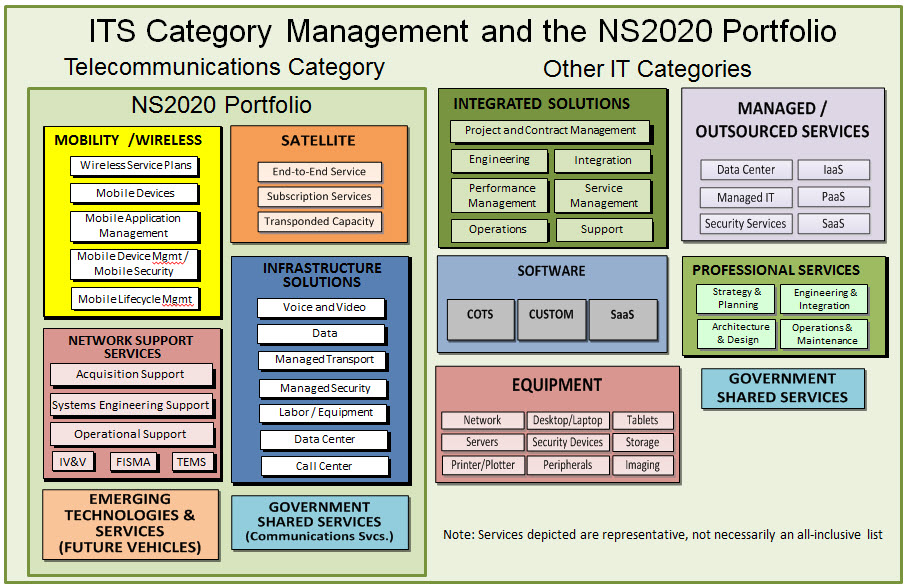(This blog post is part of a multi-week series reviewing data and trends from GSA’s IT acquisition vehicles for FY15. Read previous posts at http://gsablogs.gsa.gov/technology/)
Satellites Make a Difference
Use of commercial satellite systems continue to give government the ability to make a huge difference in the lives of Americans. Defense and other systems can monitor global events and rapidly implement communications infrastructure almost immediately without advance resource and lead-time commitments.
We depend on satellite solutions more and more to meet critical warfighter and disaster recovery communications requirements. In addition, satellites provide network diversity and resilience in the event that a terrestrial-based network fails.
We rely on satellites for weather alerts, search and recovery, shipboard and maritime navigation, distance learning and training, and many scientific and research programs depend on commercial satellite capacity.
SATCOM also supports additional remote and mobile applications in the areas of humanitarian relief, disaster-response communications, and counter terrorism efforts.
Satellite Use, by the Numbers
Use of commercial satellite services in Fiscal Year 2015 (FY15) by government under GSA-DoD’s joint Satellite Communications (SATCOM) program continues to be strong.
Usage exceeded $532 million in FY15. Nearly 2,000 services and items have been delivered through the SATCOM contracts since inception in 2011.
A total of 44 agencies, including 34 civilian agencies, ordered satellite services in FY15 from the joint GSA-DoD program called Future COMSATCOM Services Acquisition (FCSA).
Defense needs continue to dominate the government’s commercial satellite buys under FCSA with approximately 93.7% of business volume from defense and 6.3% from civilian agencies. This is consistent with FY14 demand.
Agencies buying through the FCSA program obtain lower prices. Bandwidth prices in FY15 using the FCSA contract averaged 34% savings off of Schedule list prices. GSA estimates that the SATCOM centralized competition and increased price transparency driven by the GSA-DoD partnership saved the government $211 million in FY15.
Today’s Satellite Buying Trends
The buying patterns on the SATCOM contracts remain consistent with last year, showing which satellite services are most often used and how agencies are buying them.
Most commercial satellite requirements (approximately 75%) continue to be satisfied through use of IT Schedule 70.
- Agencies continued to order mostly transponded capacity from Schedule 70 Special Item Number (SIN) 132-54, to use dedicated bandwidth on a commercial communications satellite. Agencies pay for service from fixed and mobile locations to a satellite and back to the end user. In FY15, transponded capacity accounted for 57% of orders.
- Subscription services (Schedule 70 SIN 132-55) continue to be the second most in demand, accounting for approximately 18% of government satellite solution demand in FY15.
In addition, more complex solutions that often contain customized components associated with technology, geography, mobility, or security are satisfied via Custom SATCOM Solutions (CS2) and Custom SATCOM Solutions – Small Business (CS2-SB). Use of CS2 and CS2-SB rose from 20% to 25% of GSA’s commercial satellite demand from FY14 to FY15.
The SATCOM program again proved to be a strong supporter of small business. In 2015, $63.9 million (12% program-wide) of purchases went to small businesses compared to $45 million (9% program-wide) in FY14. In FY15, $20.8 million was through GSA’s-DoD’s joint CS2-SB contract and $43.1 million through Schedule 70.
Planning for the Future with CS3
The past year also included the Department of Defense’s commitment to the next generation GSA-DoD joint satellite services solutions.
In FY15, GSA, DoD and other government agencies started to plan for what government commercial satellite contracts and solutions we’ll have for the future: Complex Commercial SATCOM Solutions (CS3).
CS3 will be the follow on contract for CS2 and CS2-SB which expire in August 2017 and February 2017, respectively. CS3 looks to build upon the success of CS2 and CS2-SB to create contracts as flexible and agile as possible to meet and satisfy the widely differing requirements of the federal government both now and for the next decade and beyond.
In 2015, we met several CS3 milestones, which included forming the GSA-DoD CS3 development team, issuing a Request for Information (RFI) to industry, engaging and collaborating with industry at a GSA-hosted CS3 Industry Day, and launching a new Interact Site to continue the dialog with industry on the future CS3.
On December 29th, we posted the CS3 Request for Proposals (RFP) on FedBizOpps.
Stay tuned for more in 2016 about CS3.
Join the Interact Site and follow us on Twitter @GSA_ITS to hear more and join the conversation.
